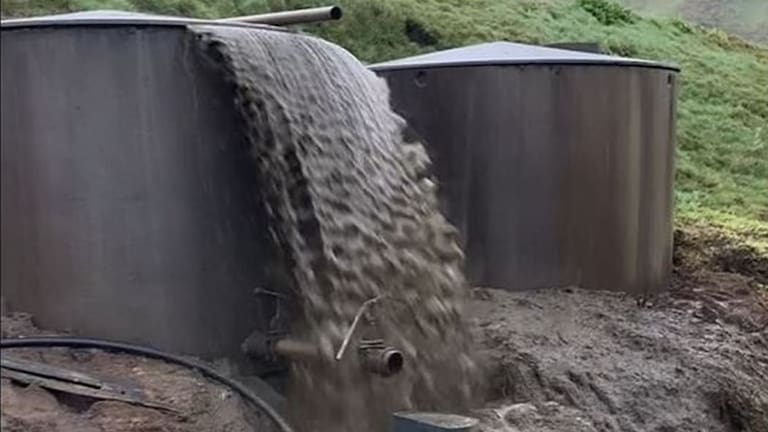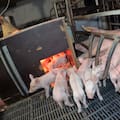The culmination of weeks of field work on the coast of Kaikōura by the Department of Conservation has revealed the extent of the damage done to the fur seal population by a starvation event that first emerged last spring.
Dr Jody Weir is DoC’s resident seal expert, a marine biologist with decades of experience working with marine life across the globe. She says more than 1000 fur seals, mostly pups, have been found dead in the months since last September.
“There was a stretch that was about 800 metres long where I was counting 20-40 dead animals. We were also seeing amongst the live individuals in the colony, several that looked very, very skinny, so emaciated, showing their ribs, and shoulder and collar bones as well.”
Higher than normal numbers of seal deaths were also recorded by her DoC colleagues in Napier.
Vets and experts from the Ministry of Fisheries and DoC investigated and performed necropsies on some of the dead seals which meant they could rule out disease and revealed the fur seals had died of starvation.
The Department of Conservation has spent weeks investigating on the coast of Kaikōura after a mass starvation event. (Source: Sunday)
“It certainly is a very painful way to die, and a lot of suffering that would be involved for the animals.”
Weir says the fur seals are vital to the ecosystem as they’re a top predator, and also a canary in the coalmine.
“They’re what we call an ecosystem sentinel because they indicate the overall health of the marine environment.”

Too many seals?
It is estimated there were once more than a million fur seals in Aotearoa before they were nearly wiped out in the fur and oil trade. Since 1978 they’ve been protected under the Marine Mammals Act. Those protections have allowed their numbers to grow and there are now about 25,000 fur seals around the Kaikōura area.
The rising number of fur seals prior to the recent event had not gone unnoticed by some locals who Sunday spoke to, who question whether the fur seal population had simply become too high and unsustainable.
Fisherman Kevin Duncan has lived in the area for two decades and used to manage the local Hunting and Fishing shop before retiring.
He believes the recent starvation event can be blamed on “natural attrition”.
“I think it’s just a natural cycle, because the population’s got very high, the food source is not getting higher.”
He and his fishing buddies have also spotted dead seals along the coast in the area and have all noticed that where once there were no fur seals, now they appear plentiful.
“If they're dying, that’s showing that there’s too many for the food source that’s there. It’s just the way the sea goes.”

What’s going on?
Sunday put the idea that there are too many seals to Weir who said there was a lot of misunderstanding.
“We know that they're making a comeback, we know they're nowhere near their historic population size. Of course we have a completely different world than what we had in the times of the fur seal trade.
"And so it’s not at all possible that this area can sustain those kinds of numbers at all. And we’re already seeing that it looks like they can’t sustain what they did last year.”
She doesn’t believe it is part of a natural selection process either because seals have an extremely varied diet.
“Only about 10 percent [of the fur seals’ diet] overlaps with commercial fishing. The fact that they're not finding enough through all of that combination, it’s really an indicator that there’s something much larger afoot.”
The bigger picture
Weir says climate change is altering our ocean systems in complex ways that will be related to what’s happening to the fur seals.
“it is quite distressing to see any animals suffering and to me, also, just it was very, very shocking to see the reality of some of these climate changes that we’re seeing. Our ocean is not well, so it seems to be a very, very clear indication that something’s not right.”
The warming ocean could mean that the food seals want has moved to deeper water, and may be just beyond reach.
It’s a view supported by Director of Science and Information at Fisheries New Zealand Simon Lawrence who said: “These are absolute manifestations of what happens in the changing climate."
The Preliminary Results
To understand the impact on the seal population in Kaikōura, Weir led a team of 21 assistants and volunteers over three weeks to catch, weigh and measure some of the surviving pups.
Estimates of the pups born at Ōhau Point from 2011 to 2023 show a relatively stable birth rate with 2401 pups in 2023. However, this year Weir’s preliminary results show it was less than half that number with only 1182 pups surviving, the lowest number recorded in 14 years.
The physical condition of the surviving pups was on a par with the average weight, lengths and girths as last year.
The Way Forward
For Weir the challenges facing the fur seals and other marine life are not something to fret about but rather something to use as fuel for her work. And, although understanding exactly what the impact is on the fur seals is useful, she has another way of looking at it.
“We already know enough to know that there's problems happening. So I think I’m in a place where I don’t think we need to collect data incessantly to just mark the decline and the crashing of our marine eco-system," she said.
"I think we already know enough to be able to act in certain areas.”



















SHARE ME